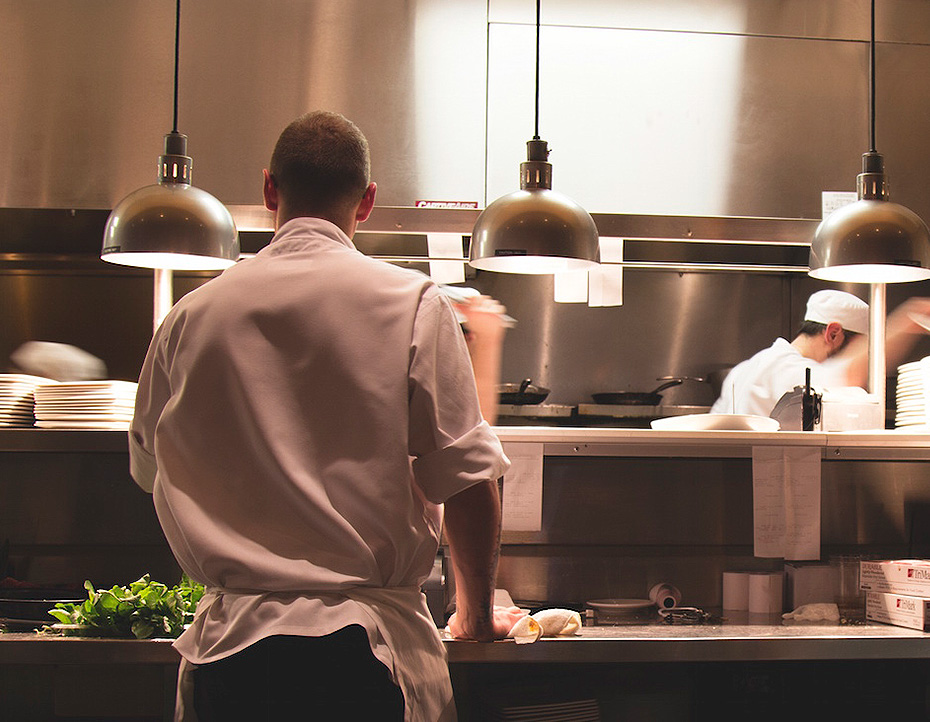It is calculated that Spanish restaurants lose more than 255 million euros a year due to scraps and wasted food. The awareness of the catering sector all over the world to this topic is always growing, although many small and family businesses do not carry out a close follow-up of the food which is wasted in their company. We would like to offer you some simple pieces of advice about managing waste in your restaurant and saving money.
First step: waste assessment.
The three areas where food is wasted in a restaurant are in storage, in preparation and in the dining hall. Wherever possible, start by separating the food waste into three different buckets according to the area that it belongs to. Set a test period of a week and measure the results. A study by the Autonomous University of Barcelona in 2013 calculates that the value of one kilogram of wasted food is 3.1 euros, without even taking into account storage costs and the time and energy consumed in preparation. Calculate the money which is literally going “”straight into the bin”” and go on to the next step to see how this expense can be reduced.
Second step: reduction plan taking the following points into account.
• Purchase and storage: Carry out a planned sales prediction using your knowledge of the clientele. Once prepared, cooking bases like sources, fried onion, garlic and tomato bases and stocks have great versatility and can be used in a large number of different dishes, reducing the probability of their going bad.
• Ensure the correct storage of food products to prevent them from deteriorating and put a rotation system in place to make sure that the oldest products are always consumed first. It is preferable for one person to manage the refrigerators and the storage room and that this person has time specifically assigned to carry out this job correctly and can update the inventory regularly.
• Preparation: the cooks and their assistants should have the necessary tools and time at their disposal for a correct preparation of the dishes. It is proven that a hurried or careless preparation results in a greater amount of waste.
• Drawing up the menu: it is important to identify the less popular dishes and those which bring more waste back to the kitchen. Consider changing their size, the ingredients, or even removing them from the menu completely. A dish which comes back to the kitchen half full implies a double cost: the cost of the food which is wasted and that of the energy and time used in its preparation. A very useful trick when drawing up a menu is the use of generic names such as fish of the day, chef’s soup or seasonal salad, which will help us to use up perishable products on time.
• Re-use of leftover food: as careful as you are during preparation, you can always find yourselves with leftovers from the pre-cooking stage and with food which has been prepared but which nobody has taken. As long as we comply with the necessary hygiene and preservation measures, these leftovers can be reused and transformed into new preparations. A meat stew, for example, can be salvaged as caldoso, cannelloni or croquettes; potatoes that have already been boiled can be used to make a Spanish omelette or a potato salad, vegetables which have been cooked can go into scrambled eggs or a pasty… there are many possibilities. When you freeze leftover food for re-use, it is worthwhile paying attention to the size of the container used for freezing, and always to use small containers to avoid wastage when the food is thawed.
• Dining hall: good communication between kitchen and dining room staff is essential if the kitchen planning is to reach the diners. Good waiters will know the state of your storage room and will know how to influence clients to choose the specialities which need to be consumed first.
All these measures can mean great savings for your business at the end of the year, but it is of great importance that all the staff in your restaurant are aware of the issues at hand and that you carry out continuous follow-up of the plan to identify possible areas of risk and new ways to reduce waste.
We hope this article has been of use to you. Tell us about your experience in scraps and waste management in your business and keep sharing this article on your social networks.



Follow us